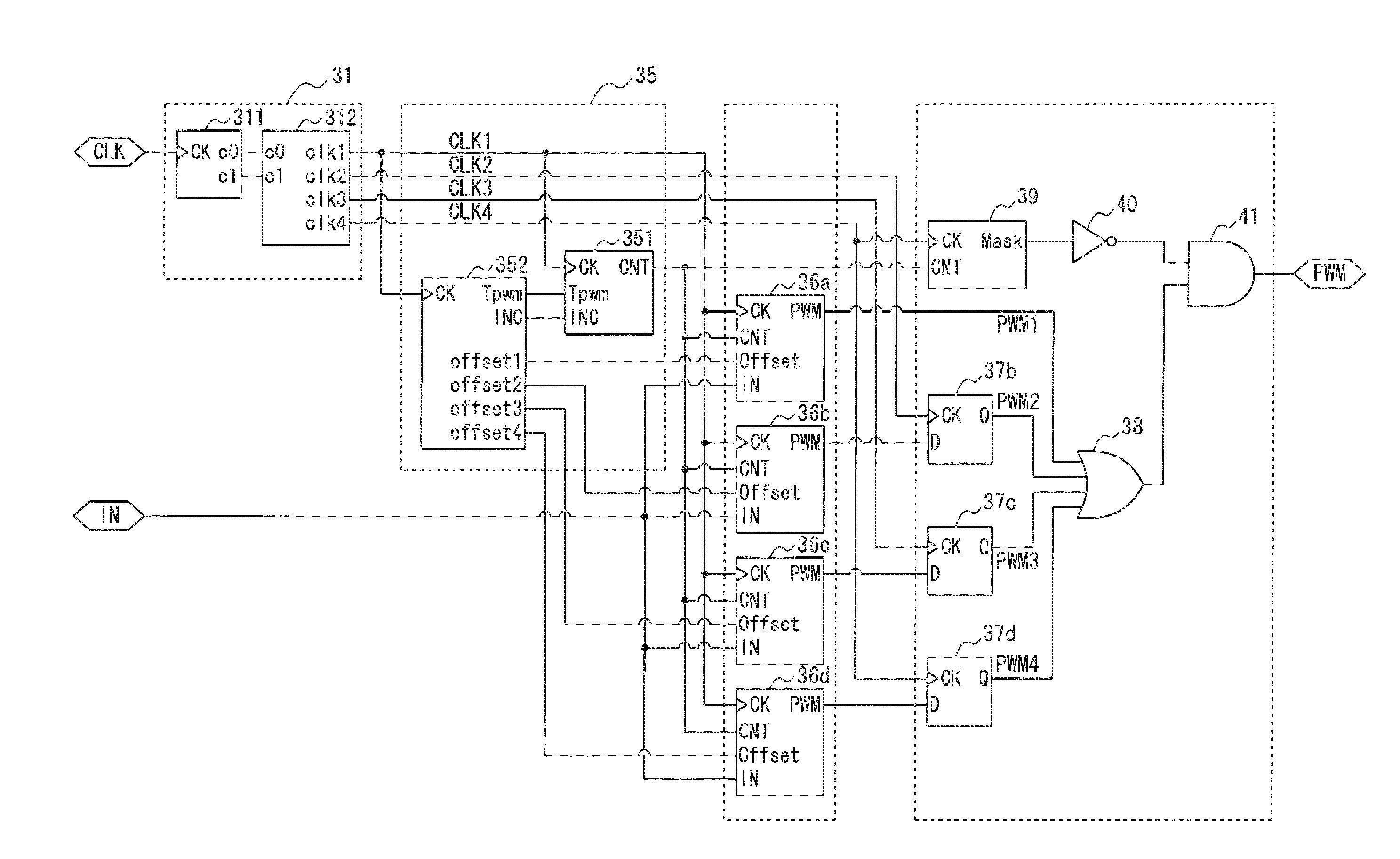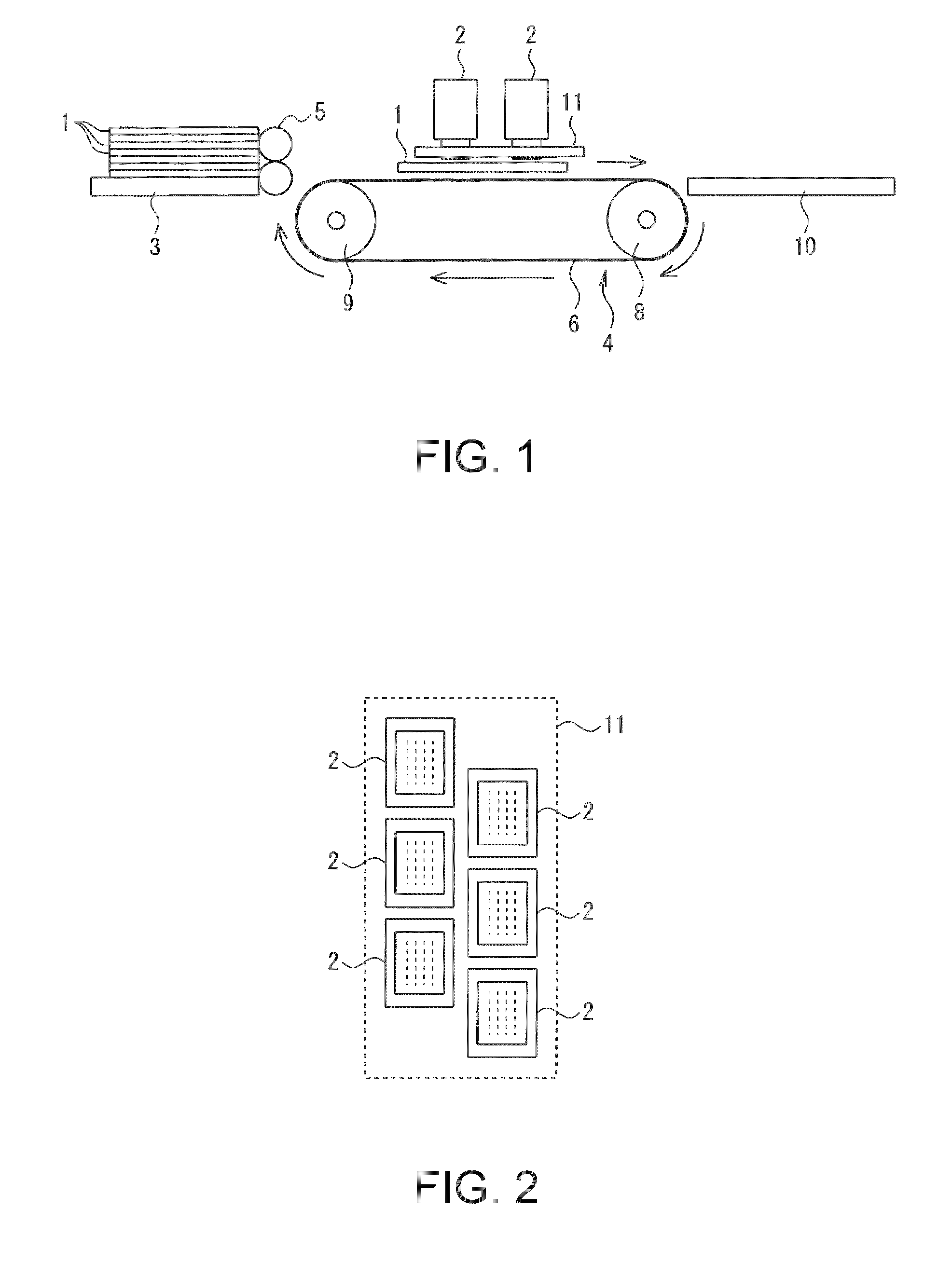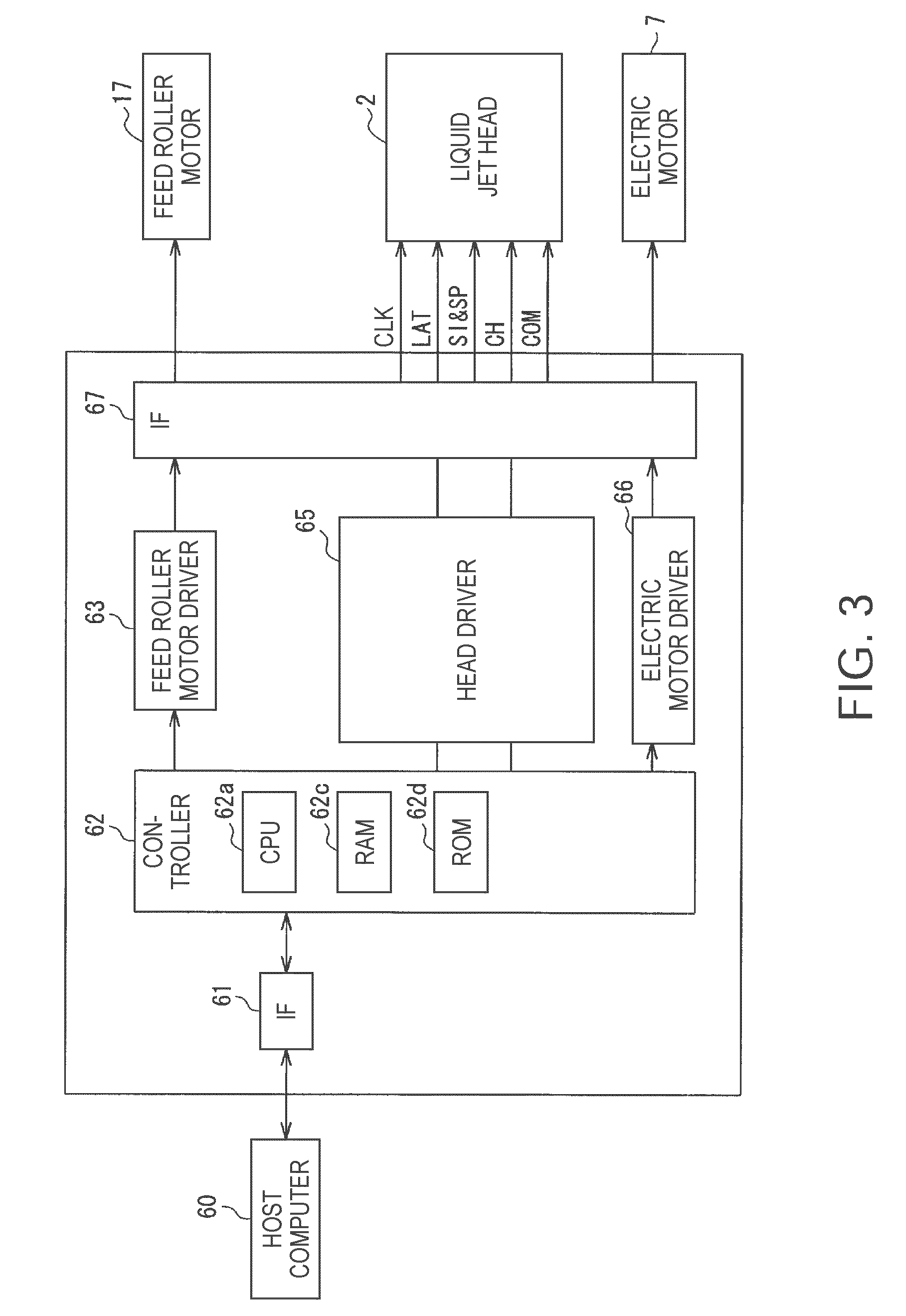Pulse width modulation circuit and liquid jet printing apparatus
- Summary
- Abstract
- Description
- Claims
- Application Information
AI Technical Summary
Benefits of technology
Problems solved by technology
Method used
Image
Examples
first embodiment
[0064]FIG. 7 shows the pulse width modulation circuit used as the previously described modulation circuit 26. With the pulse width modulation circuit, a clock signal generation circuit 31, by dividing or multiplying the clock signal CLK, and shifting the phases, generates first to fourth clock signals CLK1 to CLK4 with mutually differing phases, and first to fourth counters 32a to 32d count the clock signals CLK1 to CLK4, and output results of the count as first to fourth reference signals CNT1 to CNT4. The count increases or decreases by a predetermined value set in advance at each rise of the clock signals CLK1 to CLK4.
[0065]The reference signals CNT1 to CNT4 become sawtooth wave signals by configuring in such a way that the count increases by the predetermined value at each rise of the clock signals CLK1 to CLK4, and the count value is reset in the event that a predetermined time elapses, or the count value becomes a predetermined value or more. Meanwhile, the reference signals C...
second embodiment
[0070]Details of the high resolution and high speed response due to the pulse width modulation circuit of some aspects of the invention will be described in a differing embodiment. FIG. 8 is a block diagram showing the pulse width modulation circuit of some aspects of the invention. Although the diagram is divided into blocks, actually, it is also acceptable to construct it with the computation process using the program.
[0071]In the second embodiment, there is only one clock signal counter. A clock signal generation circuit 31 having a function equivalent to that of FIG. 7 is provided with a phase locked loop (PLL) circuit 311 which outputs clock signals, a frequency of which equals to the integral multiple of the frequency of the clock signals CLK, and a multiphase clock circuit 312 which outputs first to fourth clock signals CLK1 to CLK4 with phases shifted 90 degrees each, that is, with mutually differing phases, from the clock signals equal to the integral multiple. It is also a...
third embodiment
[0088]FIGS. 12A and 12B show a temporal change of clock signals CLK1 to CLK4, reference signals CNT1 to CNT4, comparison signals PWM1 to PWM4, and a final pulse width modulated signal PWM, of the FIG. 12A shows a time of an increase of count values of the up / down counter 49, that is, the reference signals CNT1 to CNT4, while FIG. 12B shows a time of a decrease of the reference signals CNT1 to CNT4. In this description, the increase or decrease value DEF of the up / down counter 49 is taken to be 4, the increase start initial value DTOU of the first reference signal CNT1 to be 0, and the decrease start initial value UTOD to be 16.
[0089]In the same way, the increase start initial value DTOU of the second reference signal CNT2 is taken to be 1, and the decrease start initial value UTOD thereof to be 15, the increase start initial value DTOU of the third reference signal CNT3 is taken to be 2, and the decrease start initial value UTOD thereof to be 14, and the increase start initial valu...
PUM
 Login to View More
Login to View More Abstract
Description
Claims
Application Information
 Login to View More
Login to View More - R&D
- Intellectual Property
- Life Sciences
- Materials
- Tech Scout
- Unparalleled Data Quality
- Higher Quality Content
- 60% Fewer Hallucinations
Browse by: Latest US Patents, China's latest patents, Technical Efficacy Thesaurus, Application Domain, Technology Topic, Popular Technical Reports.
© 2025 PatSnap. All rights reserved.Legal|Privacy policy|Modern Slavery Act Transparency Statement|Sitemap|About US| Contact US: help@patsnap.com



